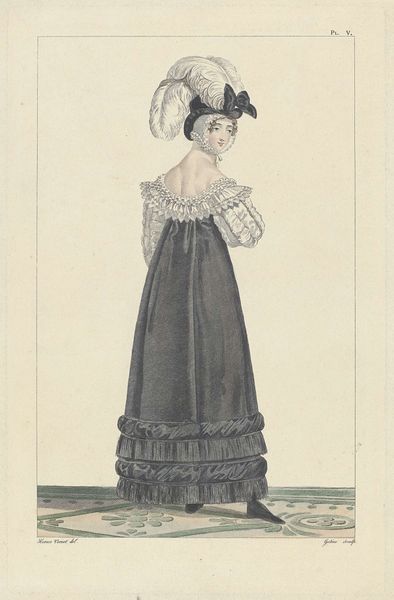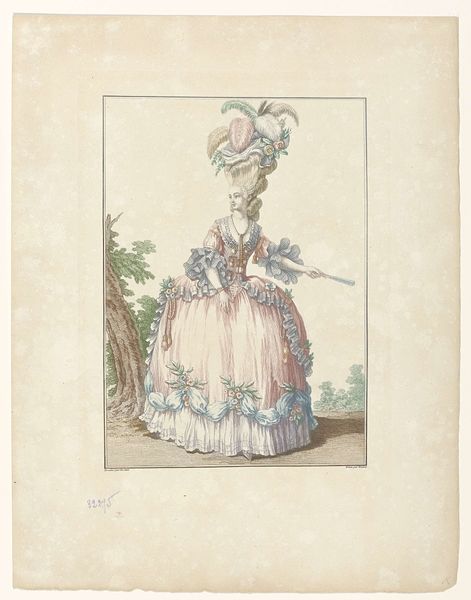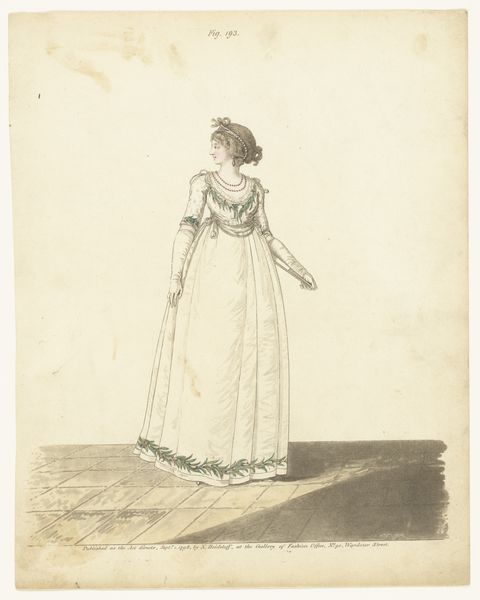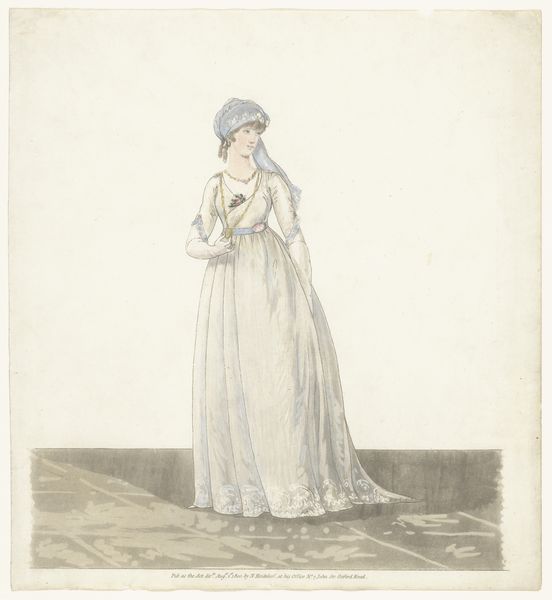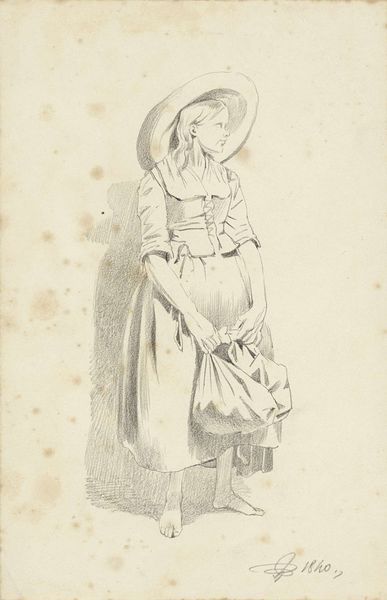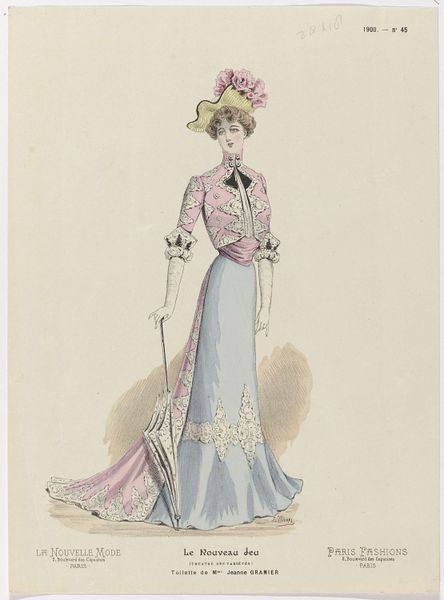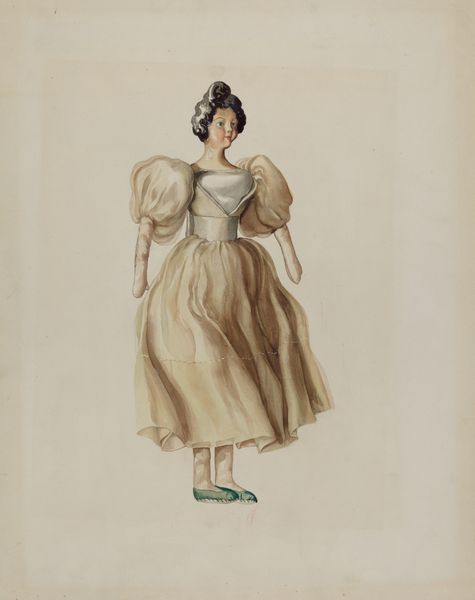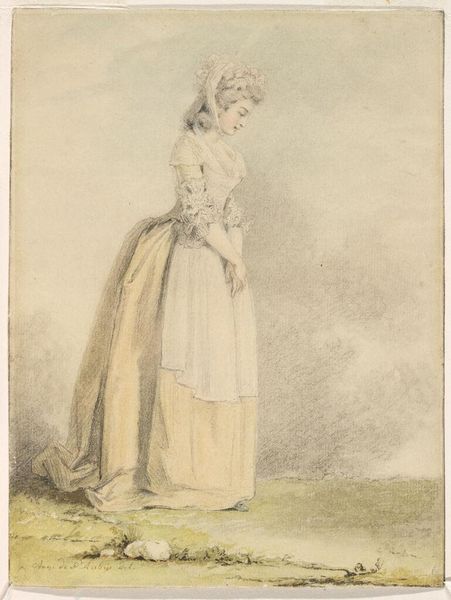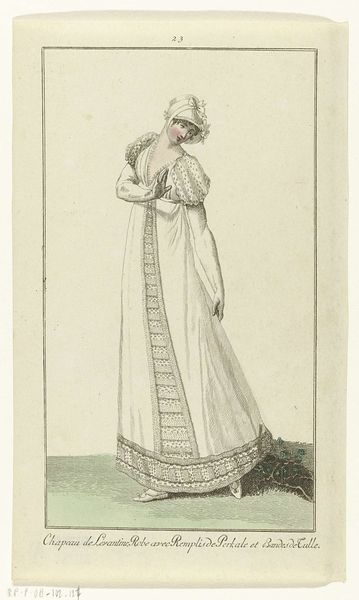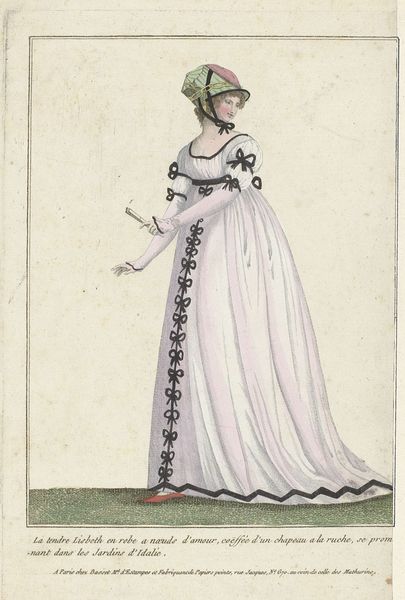
watercolor
#
portrait
#
watercolor
#
romanticism
#
watercolour illustration
#
genre-painting
#
watercolor
Dimensions: height 269 mm, width 205 mm
Copyright: Rijks Museum: Open Domain
Curator: Looking at "Standing Girl in Costume," a watercolor created sometime between 1811 and 1873 and currently residing here at the Rijksmuseum, one can't help but be drawn in by its subtle charm. Editor: My first impression is one of understated elegance mixed with a hint of melancholy. The color palette feels restrained, but her pose seems to hint at something beyond the visible, a sort of wistful longing. Curator: Indeed. The watercolor medium itself lends an air of ethereality, allowing the artist, Pieter van Loon, to depict the traditional clothing of the time with a delicate touch. The details in her dress and the ornamentation of her hat hold deeper significance, they speak of community, status, and identity within a specific cultural context. Think about the emotional and psychological weight embedded within each meticulously rendered stitch and embellishment. Editor: I wonder about that specific context, though. Costume isn't just an aesthetic choice; it communicates so much about gender, class, and even political affiliations of the woman depicted, and by extension, the artist. Who was she? Was this about idealizing tradition or perhaps something else? What message do you suppose Van Loon was hoping to transmit? The subtle hint in her expression opens up a far broader perspective of possibilities. Curator: Perhaps a bit of both? On the one hand, these paintings offered a view into the lives of those outside urban centers. This may evoke certain longings that feed into archetypes tied to nostalgia, loss, and imagined idyllic times. Editor: And also stereotypes! Representing regional dress can easily slip into exoticizing, especially when the subjects are unnamed, like this young woman. There's a risk of reducing her to simply a representation of a group, a romantic notion that denies individuality and lived experiences. Curator: A vital perspective to consider, of course, yet one must also consider the intent behind Romanticism. While not devoid of stereotypes, its goal was often to embrace cultural differences rather than obliterate them in a push towards globalized industrial ideals. It suggests perhaps a longing for times and communities with deeper ties. Editor: Yes, the layers of possible readings are plentiful. This small artwork certainly contains worlds. I can look at it for hours and think through all it encapsulates! Curator: Absolutely. This single, unassuming watercolour resonates across centuries of cultural and emotional currents, still generating thought today.
Comments
No comments
Be the first to comment and join the conversation on the ultimate creative platform.
